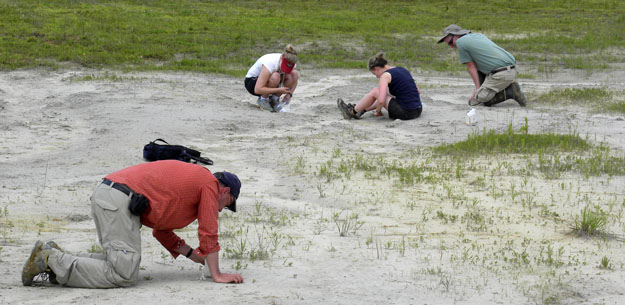NEW ALBANY, MISSISSIPPI — The kind of science our paleontological field team is doing ultimately depends on unpredictable discoveries. We came to this part of the world based on the recorded experiences of generations of geologists who assembled maps of rock types, calculated stratigraphic ages, and made long lists of fossils they found. From this body of knowledge we could estimate our chances of finding certain kinds of fossils in certain places. Nevertheless, as with those pioneering scientists, we ultimately have to find things on our own.

Scouring the ground for fossils in the Nixon Sand Facies of the Prairie Bluff Formation (Upper Cretaceous) in Pontotoc County, Mississippi.
The old adage that “you find what you’re looking for” has some truth in exploratory paleontology. You have to know what your target fossils look like before you can collect them. This means recognizing them despite their orientations in the sediment or their preservation. We develop a “search image” over time for each particular types of fossil. Paul Taylor, for example, can pull bryozoans off the ground right under my nose because he has trained a set of search images for decades. On this trip we have all learned what to expect when we crawl across the Prairie Bluff or Clayton formations. It is an honor to spend a day plucking little treasures from the ground and adding them to the store of human knowledge.



